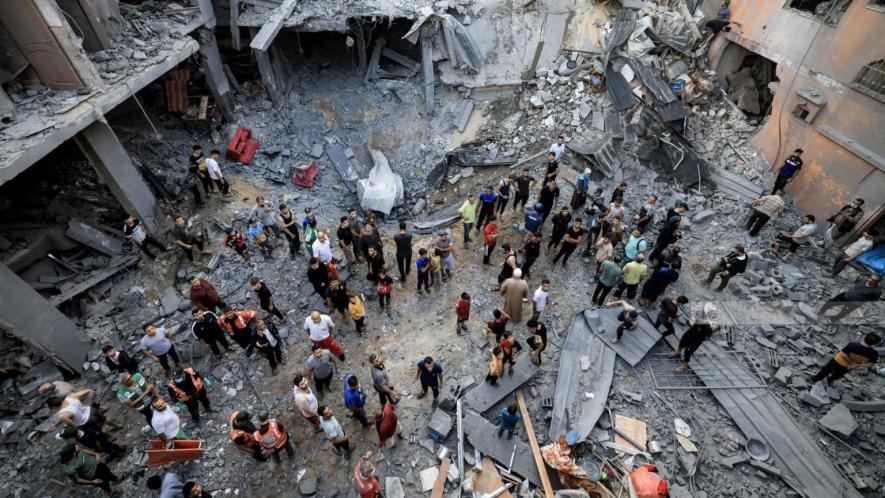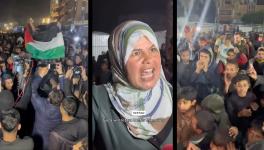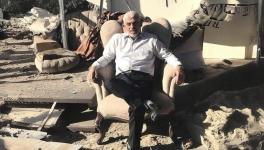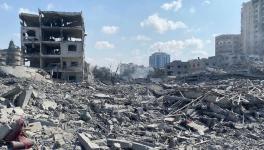Attacking Hospitals a Grave Violation of International Law

Civilians search for survivors among the rubble in an Israeli airstrike on Khan Yunis. (Photo: PMFA/X)
War is always characterised by its destructive nature, bringing suffering and loss to people and countries. Every war can push its victims and societies back decades, if not more. The recent developments in Israel and Palestine have already proved this dangerous effect of war.
On October 17, a massive explosion rocked the Al-Ahli Arab Hospital in Gaza, reportedly resulting in the tragic loss of nearly 500 Palestinian lives, including women, children, and the elderly. The casualties of the attack included medical staff, such as doctors and nurses.
The incident resulted in widespread international condemnation. Many victims had sought refuge inside the hospital from the continuous Israeli airstrikes that had battered the besieged enclave for nearly two weeks.
Palestinian officials have pointed fingers at Israel, accusing them of intentionally targeting the hospital. At the same time, Israel has blamed Gaza-based armed groups such as Hamas, alleging their involvement in this horrific event. However, Palestinian armed groups have vehemently denied any role in the incident.
This is not the first, nor, most probably, the last incident of this ongoing conflict in which civilians and civilian infrastructure end up being targeted. In a recent press conference on October 9, Israeli Defence Minister Yoav Gallant declared enforcing a complete blockade of Gaza, which includes restrictions on food, electricity, water, and fuel. The present condition of Gaza is nearing a total destruction of any civilian infrastructure essential to sustain human living.
But what is the position of international law on this matter?
Attacking innocent civilians and destroying infrastructure has always been a part of war strategies. In ancient battles, destroying dams was considered among the ace tactics to force the opposition into subjugation. However, over time, modern laws emerged to govern war strategies.
Today, the main objective of war-related international law, often called international humanitarian law, is to reduce suffering and protect the rights of individuals affected by armed conflicts.
International law has established rules to limit the targeting of non-combatants and explicitly prohibits causing intentional harm to civilians to minimise civilian casualties and suffering. The law also tries to reduce the brutality of warfare by imposing restrictions on the methods and means of conflict. This includes the prohibition of certain kinds of weapons, such as chemical and biological weapons.
International law distinguishes between combatants and civilians to bring proportionality in the use of force. It protects combatants, such as prisoners of war and wounded soldiers, by laying out guidelines for their humane treatment, medical care, and eventual release.
Accountability is another cornerstone of international law, which seeks to hold individuals responsible for war crimes and violations of the law, irrespective of their status in the conflict, thus deterring further transgressions and delivering justice for victims.
It also facilitates humanitarian assistance, even during hostilities, addressing the urgent needs of affected civilians by ultimately promoting peace in the chaos of war. The overall objective of war-related international law is to humanise armed conflicts by setting restrictions in the form of certain principles.
The World Health Organization has strongly condemned the attack and appealed for the immediate reversal of the evacuation orders given by the Israeli military on hospitals. Considering this, it is only fair to point out that the right to health was first described as fundamental in the Alma-Ata Declaration of 1979 at the 32nd World Health Assembly.
Geneva Conventions and Law on Warfare
The Geneva Convention, established in 1949 after the end of the Second World War, is perhaps the most important international document in war regulations.
According to Article 14, the parties to the convention are supposed to create hospital and safety zones during the conflict. These zones are designed to protect specific vulnerable groups, including the wounded, sick, and elderly individuals, children under fifteen, expectant mothers, and mothers of children under seven.
Further, Article 18 of the same convention makes it clear that the civilian hospitals organised to care for the wounded and sick, the infirm and maternity cases, may in no circumstances be the object of attack but shall always be respected and protected by the parties to the conflict.
The only exception to the above is in Article 19, which says that the protection to which civilian hospitals are entitled shall cease in the event they are used to commit, outside their humanitarian duties, acts harmful to the enemy; in other words, for hostile military purposes.
But even in such cases, the legal possibility of attacking such hospitals is limited. The same article mentions that protection can be exempted only after due warning has been given with a reasonable time limit. It adds that helping wounded soldiers in these hospitals and keeping hold of weapons and ammunition taken from enemy combatants will not be counted as actions that hurt the enemy.
Article 20 extends the protection to medical staff engaged in medical service during wartime.
In recent war history, hospitals have been attacked in Afghanistan, Croatia, Kosovo, Serbia, Syria, Congo, Sri Lanka, and South Sudan. As places of refuge for the sick and wounded, hospitals during an ongoing conflict act as a panacea to patients and locals from the hostilities of war. A healthcare facility, as vulnerable as it appears, must always be protected.
So far, any justification for bombing the hospital has not been made. Along with the fourth Geneva Convention of 1949, Article 52 (2) of the additional Protocol I enshrines special protection offered to medical facilities in wartime and states explicitly that hospitals, along with dams and other critical facilities, may not be used by those who control them for military action and should therefore never become military objectives.
The belligerents have a strong responsibility to prove that the hospital was a site of threat or that it was used for military purposes. And it is inhuman to assume that an explanation for the attack appears redundant since the hospital is now reduced to ashes.
It is here that a grey area emerges on what civilian objects contributing to violations of jus in bello (the humanitarian rules to be respected in warfare) should be treated more harshly than objects contributing to violations of jus ad bellum (the rules on the legality of the use of force) entail.
The conditions to be met under the Fourth Geneva Convention are: First, the object must contribute effectively to the military action of the enemy. This is exemplified by an object’s “nature, location, purpose or use”, which clarifies that not only objects of a military nature are military objectives. Second, its destruction, capture, or neutralisation has to offer a definite military advantage for the other side.
Also, one must appreciate that during the war, a hospital becomes a dual-use facility that can be used to treat soldiers and civilians. It can also be a shared infrastructure that is potentially useful for the military, and its destruction can limit the enemy’s progress. So, while the belligerent must meet the standards of the two tests and give a convincing reply for the bombing, the risk also is that given the size of Gaza, any facility can be wrongly called a military target, irrespective of its humanitarian character.
An orphanage, maternity wards, kindergartens, religious shrines, or homes for the elderly can all be suspected or projected by the enemy of harbouring, sheltering, and training soldiers to advance the war, if not immediately, in the near future.
Given the large-scale destruction, it is very disheartening and legally ambiguous to bring justification to the bombing. While reparations should be made, a strategic silence from the authorities sends out a negative signal that humanitarian law is a toothless tiger.
The parties to the conflict must come together to hold a ceasefire and assist in reconstruction. The international community has a duty to ensure the implementation of international law. With images of dying children in the mortuary and the mortuary itself reduced to ashes, the violence must end and pave the way for peace. Non-combatants, especially women and children, deserve protection and should not grow up to have the trauma of rubble, debris, and explosions.
Sudeep Sudhakaran and Moses Raj G S are assistant law professors at St Joseph’s College of Law, Bengaluru. The views are personal.
Get the latest reports & analysis with people's perspective on Protests, movements & deep analytical videos, discussions of the current affairs in your Telegram app. Subscribe to NewsClick's Telegram channel & get Real-Time updates on stories, as they get published on our website.
























